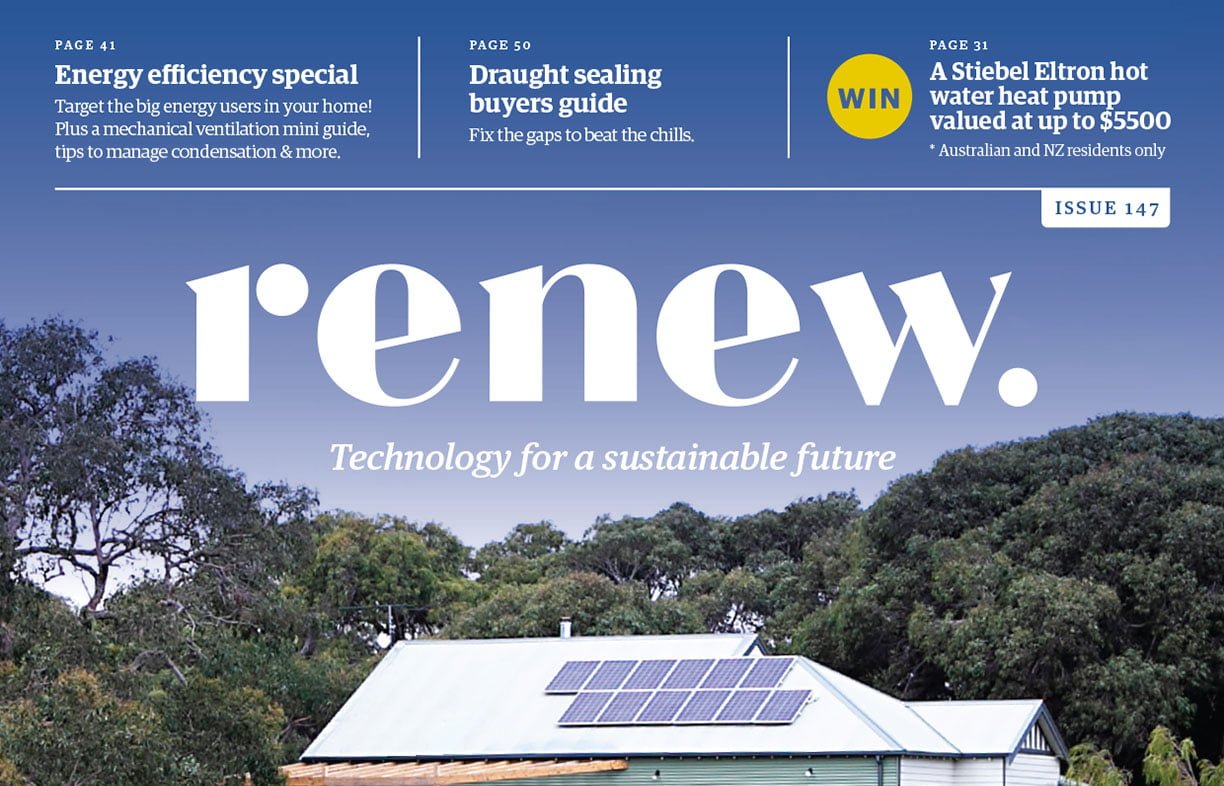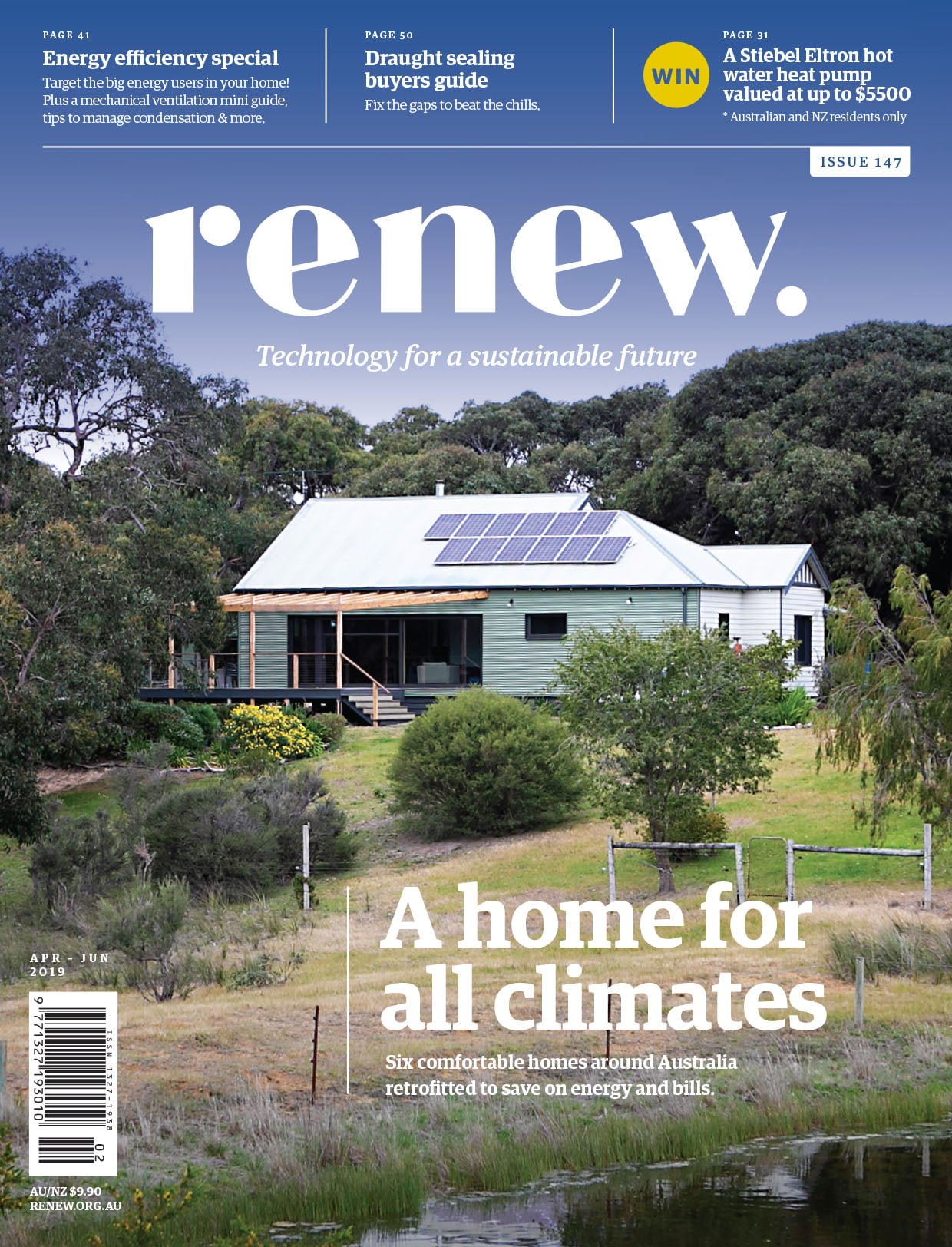Renew mag: energy efficiency special

Averages can be misleading. For example, you could say that, on average, a home in Victoria has about half of a ducted gas heater, 70% of a gas water heater and 7% of a gas-boosted solar water heater. Even though that’s clearly a home that doesn’t exist, such averages can illuminate issues and trends—and help determine priorities for households wanting to reduce their energy use in different states and climate zones.
Our article on energy use around Australia uses the Residential Baseline Study to show average household energy use by activity (down to the level of clothes dryers, refrigerators, heating and the like) and by state. The big differences are in heating and cooling, as you might expect, but, interestingly, heating emerges as a much larger energy user overall than cooling.
The study highlights other differences that depend on historical fuel use and the ‘appliance of choice’ in each state—gas ducted heating is much more common in Victoria, for example. Energy use for appliances like TVs, washing machines and dishwashers doesn’t vary much by state; instead, it’s the trends over time that stand out, such as the sharp increase when plasma TVs came onto the market, pleasingly reversed when LED LCDs took over. The positive effects that good minimum standards can have on energy use are really evident.
To go a bit beyond the averages, we’ve also included case studies of households around Australia, including this one in Sydney. Whether it’s heating, cooling, buying a smaller fridge or removing 40 halogen downlights, it’s interesting to see what’s made the biggest impact in different places and different homes.
Being able to control the ventilation of your house, rather than have leaks around windows, doors or even behind built-in appliances, can be one of the easiest ways to improve the performance of your home. Our draught sealing buyers guide this issue looks at where the gaps are—a surprisingly large number of potential culprits—and the different products and methods for sealing them up.
There’s much more besides: we look at when condensation can be a problem and what can be done about it; provide a mini buyers guide to mechanical ventilation with heat recovery, which becomes important as houses become better sealed; and look at the impact of ‘always on’ loads in the home—modems, NBN boxes, alarms and the like. We also look at load shedding on the electricity grid; the economics of solar gardens; cover the latest in electric vehicles; how to do energy efficient stained glass; and much more besides. Enjoy!


